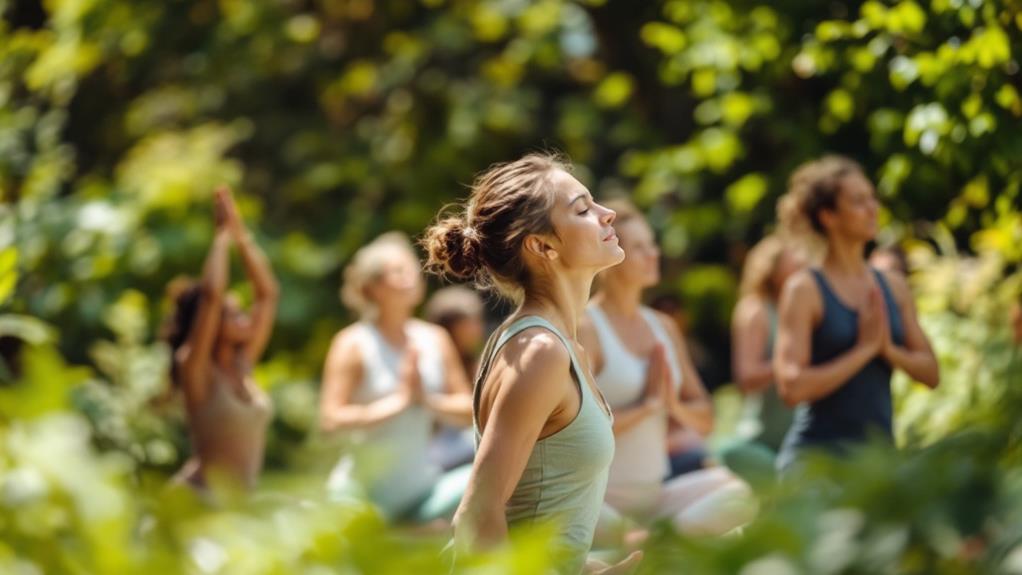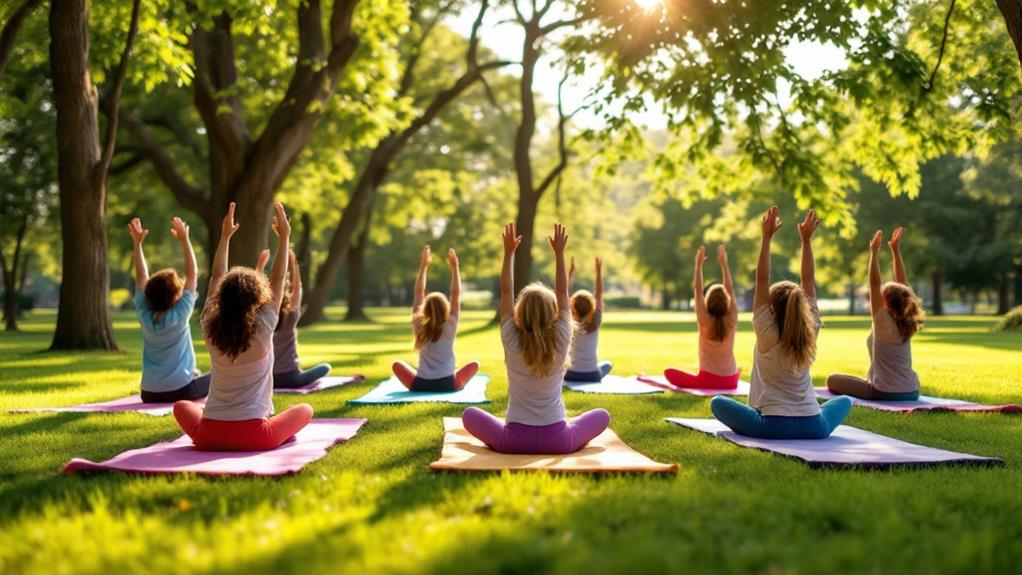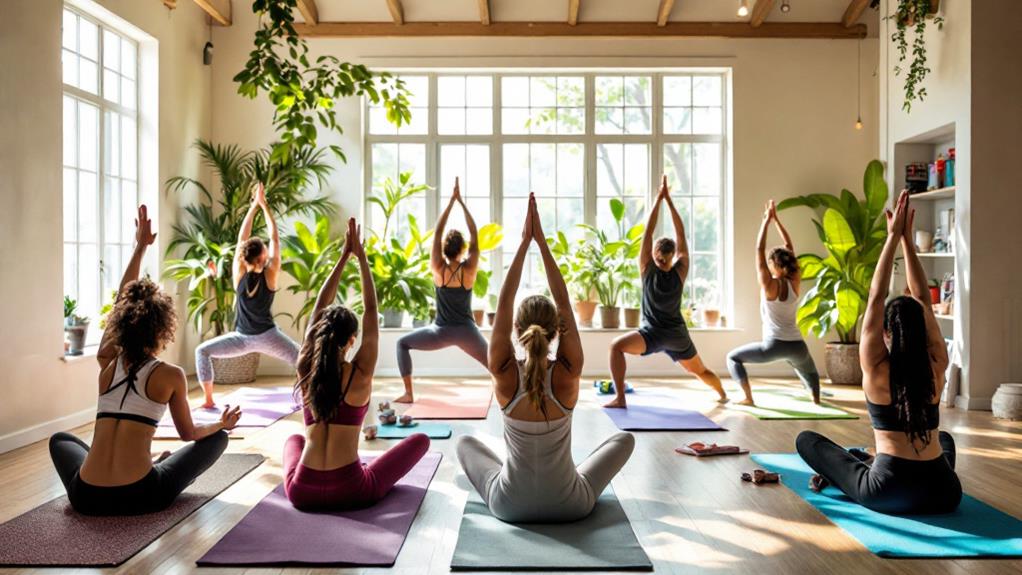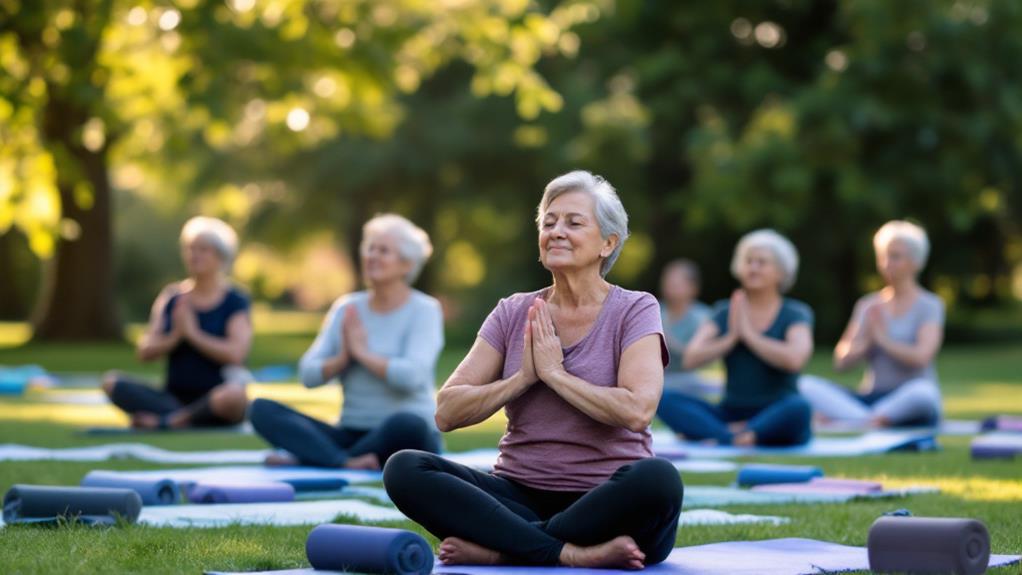At What Age Should You Start Practicing Yoga? A Guide for All Ages

You can start practicing yoga at any stage of life. Infants benefit from bonding and sensory awareness, while toddlers improve motor skills with fun poses. Preschoolers enjoy playful poses that elevate focus and social skills. School-age children tackle academic pressures and improve their fitness. For teenagers, yoga offers emotional regulation and mindfulness. Young adults find stress relief and self-discovery through practice. Middle-aged individuals benefit from restorative techniques that address common physical concerns. Seniors enjoy improved balance and decreased anxiety with gentle, accessible yoga. Each stage offers unique advantages, and exploring these will reveal how to integrate yoga effectively across a lifetime.
Benefits of Starting Young
When you start practicing yoga at a young stage, you open the door to numerous benefits that can positively shape your development. Yoga for Children is more than just physical exercise; it's a holistic approach that improves both body and mind. By engaging in yoga, you'll notice enhanced physical flexibility and strength. Studies show that children practicing yoga regularly demonstrate better coordination and motor skills, providing a solid foundation for other physical activities.
Moreover, practicing yoga can greatly increase your creativity and imagination. Through playful poses and storytelling, yoga becomes an exciting adventure that fosters a love for movement. This creative engagement is essential at a young stage, as it helps develop original thinking and problem-solving skills.
Yoga also equips you with important tools for managing anxiety and stress. Learning breathing techniques and emotional regulation early on guarantees you can navigate life's challenges with calmness and resilience. Furthermore, yoga improves focus and concentration, which can translate to better academic performance and cognitive growth.
Yoga for Preschoolers
Yoga for preschoolers, typically ranging from 2 to 5 years, offers a delightful blend of fun and learning through playful poses that improve motor skills and flexibility. At this young stage, engaging in Kids Yoga can be a joyful experience, incorporating storytelling and imagination to capture their attention spans. Classes should be lively and brief, lasting no longer than 30 minutes, to match their energy levels and keep them engaged.
In Kids Yoga, simple poses like animal movements are perfect for enhancing physical coordination and balance. Imagine your little one pretending to be a tall giraffe or a hopping frog. These activities not only develop vital motor skills but also encourage creativity. Adding elements like music and games further enriches the experience, allowing preschoolers to develop a sense of rhythm and enjoy social interactions with peers. Team-based activities foster teamwork and communication, crucial skills at this developmental stage.
Regular yoga practice can also support emotional regulation in preschoolers. By introducing mindfulness techniques early on, children learn to manage feelings of anxiety and frustration. This foundation in emotional well-being can benefit them long-term, promoting a sense of calm and focus as they grow.
School-Age Yoga Practices

For school-aged children, structured yoga classes offer a fantastic opportunity to improve focus, emotional regulation, and physical coordination. As young children face academic and social challenges, yoga provides tools to elevate their comprehensive well-being. By integrating playful elements like themed storytelling and creative poses, yoga becomes engaging and fun, fostering imagination while building fundamental skills.
Yoga for all stages encourages children to improve their posture and core strength, helping to reduce the risk of injuries. This practice not only enhances physical health but also contributes to a more positive self-image. With regular practice, school-aged children can experience reduced stress and anxiety levels, which positively impacts their academic performance and self-esteem.
In group yoga sessions, young children learn valuable social skills. They engage in partner poses and group activities that promote teamwork and empathy. These interactions help children develop strong social connections, improving their ability to collaborate and understand others. As you guide children through yoga, keep in mind that it's not just about the poses; it's about cultivating a supportive environment where they can thrive both physically and emotionally. Yoga for school-aged children truly sets the foundation for a healthy and balanced life.
Teen Yoga Techniques
As children grow into their teenage years, yoga continues to offer valuable benefits tailored to their evolving needs. Teen yoga techniques are designed to support emotional regulation and resilience, essential skills for maneuvering through adolescence. Mindfulness practices help you manage stress, promoting mental clarity that's important during this transformative time.
Engaging in poses like Warrior II and Tree pose can improve your physical strength and balance. These poses also encourage confidence and body awareness, helping you feel more comfortable in your own skin. Breathwork, such as pranayama, plays a significant role in teen yoga. By focusing on your breath, you can reduce anxiety and improve concentration, which often leads to better academic performance.
Teen yoga classes typically offer a blend of challenging poses and restorative practices. This combination caters to your need for both physical activity and relaxation, ensuring you leave feeling rejuvenated and balanced. Partner yoga is another effective technique that can elevate your experience. It fosters communication and teamwork, strengthening social connections with peers. By incorporating these teen yoga techniques into your routine, you'll find yourself equipped with tools for mental clarity and emotional resilience, setting a strong foundation for the challenges of adolescence.
Yoga for Young Adults

Steering through the shifting phase of young adulthood, you can greatly benefit from yoga, which improves physical strength, flexibility, and posture. This time of life is full of changes, with education and career pressures often weighing heavily. Yoga offers young people a way to manage these stressors by promoting mental health and reducing anxiety. By incorporating mindfulness and self-discovery techniques, yoga helps you develop emotional regulation and resilience, vital tools for maneuvering through these formative years.
Various yoga styles, like Vinyasa and Hatha, are particularly suitable for young adults. These practices encourage creativity and movement while building a strong foundation for future yoga endeavors. Regardless of whether you're seeking a physically challenging workout or a calming practice, these styles can cater to your needs, allowing you to investigate different aspects of yoga at your own pace.
Moreover, regular yoga practice can greatly improve your focus and concentration. This enhancement is invaluable not just for academic success but also for personal development. As you juggle studies, work, and social life, yoga offers a sanctuary where you can find balance and clarity. Accept yoga during these years to cultivate a healthier, more centered version of yourself.
Middle Age Yoga Adaptations
While young adults enjoy the dynamic benefits of yoga, midlife introduces different needs and opportunities for practice. At this stage, your body might require gentler movements and restorative practices to address physical changes and promote wellness. Incorporating modifications, like using props and avoiding high-impact poses, can make yoga more accessible. These adaptations improve flexibility and strength without putting too much strain on your joints.
Regular yoga practice during middle age can greatly benefit your mental and physical health. It helps alleviate common issues like back pain, joint stiffness, and stress. By promoting relaxation and mindful movement, yoga encourages body awareness and mindfulness, assisting you in managing the challenges of growing older. This mindfulness isn't limited to physical benefits; it can also reduce anxiety and depression symptoms, providing emotional resilience during life changes.
Teaching yoga to children might seem worlds apart from your practice, but both emphasize adaptability and mindfulness. As you engage in regular yoga, you'll likely find increased body awareness and emotional stability. Embracing these yoga adaptations in midlife not only supports your well-being but also guarantees a sustainable practice that grows with you.
Senior Yoga Considerations

Yoga mats rolled out in living rooms or community centers can become a gateway to improved well-being for seniors. Engaging in yoga offers numerous benefits that are particularly valuable as you grow older. Maintaining flexibility, balance, and strength can prevent falls, a common concern among older adults. Here's why yoga might be the perfect activity for you:
- Physical Health: Yoga helps you retain essential physical abilities, guaranteeing you're able to move with confidence and ease. Regular practice can alleviate menopause symptoms and improve general flexibility.
- Mental Health: By reducing cortisol levels, yoga supports mental health, lowering anxiety and depression levels. This can lead to a more positive outlook on life and better emotional resilience.
- Body Awareness: Improved body awareness through yoga can elevate your independence, allowing you to manage daily activities with greater assurance. You'll find yourself moving with more purpose and less fear of injury.
- Adaptability: With adapted poses and gentler practices, yoga is accessible to all seniors. These modifications safeguard safety while promoting mindfulness and relaxation, making it suitable even if you're new to the practice.
Consider yoga as a valuable activity that can improve your quality of life, much like how it benefits older children in maintaining health and mindfulness.
Customizing Yoga for All Ages
As you've seen, yoga offers immense benefits for seniors, but its adaptability makes it a lifelong practice that can be tailored to suit any phase of life. Even the youngest can start to practice yoga. Infants benefit from gentle movements and bonding exercises, helping them connect with their caregivers. Toddlers can engage in simple poses through play-based activities, enhancing their motor skills while having fun.
For preschoolers, storytelling yoga stimulates their imagination. Incorporating fun and creative practices maintains their interest, making yoga a delightful experience. As they grow into school-age children (ages 6-11), they thrive in more structured classes. Focusing on posture and breathing techniques helps them manage academic pressures and improve their concentration.
Teenagers find yoga a safe space for emotional exploration. With advanced techniques and mindfulness practices, yoga promotes self-acceptance and stress management during these formative years. It's a powerful tool for maneuvering through the challenges of adolescence.
For individuals with special needs, customizing yoga is essential. You can create a sensory-friendly environment and use adaptive equipment to guarantee comfort and engagement. This approach makes certain everyone, regardless of stage or ability, can enjoy the benefits of yoga.




